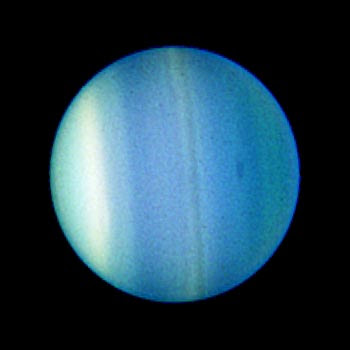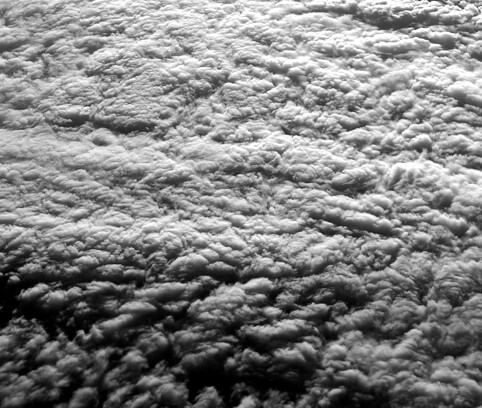The scientific proof for Genesis
Posted: Fri May 22, 2009 11:48 am
Science agrees that the chronological order of the Genesis creation account is quite accurate. That being the universe, sun, moon, and earth was created first then out of the water came dry land, then plants, marine life, animals, and finally man. What are the chances that the writer of Genesis got this order correct in the first place? Here we can clearly use science to prove God's creation. This account is told as if one was standing on the earth and witnessing God's creation...
1. God creates the heavens (the universe, stars, sun, moon) and the earth. The universe had a finite beginning. Genesis 1:1
Fact: Scientists also agree that the universe had a finite beginning starting with the Big Bang.

2. The earth was covered in water and darkness was over the water. Genesis 1:2
Fact: Research has confirmed both theoretically and observationally (via studies of Earth's oldest rocks) that indeed water initially covered most of the earth's crust. The first atmosphere was also full of volcanic debris and other harmful gases from the initial creation that would have prevented any light from coming through it.

3. God allows light to permeate through the darkness unto the earth. Genesis 1:3
Fact: After a while, the solar winds would have blown away the volcanic debris and gases exposing some light in the first atmosphere. Scientists also agree that light would have been the first thing needed to conduct plant life through photosynthesis and heat up the earth.

4. God creates thick clouds or water vapor in the earth's atmosphere. Genesis 1: 6-7
Fact: Scientists agree that the earth would require a stable water cycle of condensation and future precipitation for lifes survival. This water vapor cover would be an ideal environment (greenhouse) for growing plants, trapping heat and melting ice. Also known as the second atmosphere, this vapor layer was so thick that the stars, sun and moon were not clearly visible.

5. God separates the dry land from the water in one place. Genesis 1: 9-10
Fact: Most scientists agree that the land was one land mass called Pangaea that formed out of the water then split apart to make the other continents.

6. God creates plants on earth. Genesis 1: 11-12
Fact: Scientists agree that plants were the first living organisms to colonize the earth before the complex land animals (deer, fox, bear) and fish. Plant life is crucial for the creation of oxygen, the removal of carbon dioxide, and creating sugars and food for the mammals.

7. God clears the clouds and allows the sun, moon and stars to be discernible in the skies and to mark the days and seasons. Genesis 1: 14-16
Fact: In the first and second atmospheres a water vapor canopy, gases, and other debris surrounded the earth. After the plants started to develop, these dense atmospheres diminished (exposing the stars, sun and moon) as the plants produced enough oxygen to produce our third atmosphere which includes the ozone layer which now protects us from the ultraviolet radiation. The ozone layer is critical for sustaining life and giving us clear skies to see the heavens.

8. God creates marine life. Genesis 1: 20-22
Fact: Most scientists agree that marine life did indeed arise before the land animals and man. With light, breathable air, dry land, oceans, plants, water cycles, and an ozone layer to protect them, the world is now ready for sea creatures and animals and eventually humans.

9. God creates animals. Genesis 1: 24-25
Fact: Scientists agree that virtually every animal phyla (including chordates and many phyla now extinct) appeared during a short geological moment.

10. God creates mankind. Genesis 1: 26-27
Fact: According to the geologic time scale, scientists agree that mankind was one of the last mammals created on the earth. Exactly like the Genesis account.

1. God creates the heavens (the universe, stars, sun, moon) and the earth. The universe had a finite beginning. Genesis 1:1
Fact: Scientists also agree that the universe had a finite beginning starting with the Big Bang.

2. The earth was covered in water and darkness was over the water. Genesis 1:2
Fact: Research has confirmed both theoretically and observationally (via studies of Earth's oldest rocks) that indeed water initially covered most of the earth's crust. The first atmosphere was also full of volcanic debris and other harmful gases from the initial creation that would have prevented any light from coming through it.

3. God allows light to permeate through the darkness unto the earth. Genesis 1:3
Fact: After a while, the solar winds would have blown away the volcanic debris and gases exposing some light in the first atmosphere. Scientists also agree that light would have been the first thing needed to conduct plant life through photosynthesis and heat up the earth.

4. God creates thick clouds or water vapor in the earth's atmosphere. Genesis 1: 6-7
Fact: Scientists agree that the earth would require a stable water cycle of condensation and future precipitation for lifes survival. This water vapor cover would be an ideal environment (greenhouse) for growing plants, trapping heat and melting ice. Also known as the second atmosphere, this vapor layer was so thick that the stars, sun and moon were not clearly visible.

5. God separates the dry land from the water in one place. Genesis 1: 9-10
Fact: Most scientists agree that the land was one land mass called Pangaea that formed out of the water then split apart to make the other continents.

6. God creates plants on earth. Genesis 1: 11-12
Fact: Scientists agree that plants were the first living organisms to colonize the earth before the complex land animals (deer, fox, bear) and fish. Plant life is crucial for the creation of oxygen, the removal of carbon dioxide, and creating sugars and food for the mammals.

7. God clears the clouds and allows the sun, moon and stars to be discernible in the skies and to mark the days and seasons. Genesis 1: 14-16
Fact: In the first and second atmospheres a water vapor canopy, gases, and other debris surrounded the earth. After the plants started to develop, these dense atmospheres diminished (exposing the stars, sun and moon) as the plants produced enough oxygen to produce our third atmosphere which includes the ozone layer which now protects us from the ultraviolet radiation. The ozone layer is critical for sustaining life and giving us clear skies to see the heavens.

8. God creates marine life. Genesis 1: 20-22
Fact: Most scientists agree that marine life did indeed arise before the land animals and man. With light, breathable air, dry land, oceans, plants, water cycles, and an ozone layer to protect them, the world is now ready for sea creatures and animals and eventually humans.

9. God creates animals. Genesis 1: 24-25
Fact: Scientists agree that virtually every animal phyla (including chordates and many phyla now extinct) appeared during a short geological moment.

10. God creates mankind. Genesis 1: 26-27
Fact: According to the geologic time scale, scientists agree that mankind was one of the last mammals created on the earth. Exactly like the Genesis account.

